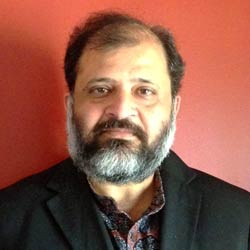Voice and Presence
Your vocal cords are like two small flaps in the larynx or voice box that flutter, closing and opening and closing again, allowing for the breath to vibrate and be made into sound. The breath strumming the vocal flaps creates the human voice. This vocal vibration works its way through your body finding hollow cavities to resonate in the mouth, the head, the throat, the chest. This resonance fills your body with a presence. Humming is a simple way to experience the connection between the vibrating voice, its resonance through the body, and a sense of presence. Metaphorically you become like a hummingbird, alive and present with your own buzzing sound. If you hum together in a group your collective bodies commune with each other’s resonating presence. Losing your own limitations of embodied identity, you begin to go beyond your own boundaries, sensing through the group’s rich vibrations, a greater presence. By this experiential process the vibrating voice has taken you towards an experience of ecstasy. Voice work is rich with such soulful experience. Musical forms like Dhrupad work formally with the ecstatic element of the human voice.
The infant’s cry
The newborn infant cries out and by that physical act takes its first breath. Our voice and life force are intimately and vitally connected. The infant cries out loud when it’s hungry. How well this need is cared for leaves a deep imprint on the voice. Not being heard, not being fed is death for the infant. It’s a deep primitive connection, a link to its survival. Being heard, being fed, soothes the infant’s cry. The infant falls silent, feeling safe asleep.
Our personalities are formed from the instant we are born. Those very early negotiations for our survival. The use of our hands and faces to communicate, our voice, screaming, crying, whimpering, calling out desperately, shape and form our voice and presence. A raging, angry, despairing infant, will have that dark shade to his voice even as he or she grows up. It may reflect in an introverted moody personality; it may reflect in a sullen presence.
When in a voice workshop we create a safe caring environment, unconsciously we are reaching out and touching each infant self, soothing, deepening the voice and its presence. Our sense of trust goes deep even as the sense of denial and betrayal threatens to make its presence felt through noise and aggression. When someone talks loudly it is often that they have not been heard. Nor do they hear themselves. The voice and its presence is deeply connected to the business of listening and hearing. To others, to yourself. Listening is the path to kindness.
Language
The above detailed experience of the voice and its presence, at the very basic level of its existence and expression, is the sub strata, the base, the underlying condition of human communication. Over this layer of vocal vibration and tone is layered human language i.e. words, phrases, sentences communicating thoughts and emotions. The infant has now transformed into a child who needs to express its needs, desires, its personality through language. The voice and its presence has shape and form now. The vibrating vocal cords in the voice box as described earlier, form into a tone, this tone bends at the back of the throat and flows through the mouth cavity being shaped into language. In the English language, for example, the uninterrupted flow of vocal tone is shaped into long vowel sounds (ah aw oh oo ay ee I) by the movement of the soft palate at the back of the mouth, the tongue, the lips, the jaws. The interrupted flow of vocal tone is shaped by the same organs into consonants (t,d/p,b/k,d etc). Vowels and Consonants combine to make up words. While vowels carry forward human feelings and emotions, consonants break that flow into sense, and meaning. Take the word ‘ouch.’ While the vowel sounds ‘aa’ and ‘oo’ in the word ‘ouch’ communicate the feeling of pain and distress the consonant ‘ch’ clarifies the meaning of the word i.e. it’s not a very serious injury, just an ouch!
Vowels and consonants, emotions and thoughts, facts and feelings, all work themselves through language to communicate human needs. At different stages of our lives the objective varies. When we are young we use our voices to play, to have fun, to laugh, to cry, creating bonds and friendships that will sustain through the great battle of life. Our voice serves all these intimacies and connections. We are playfully learning to prepare for adult life when we will have to go out and hunt food for our families and community. From ‘play’ our voice and presence begins to serve our ‘work.’
The Actor’s voice and presence
Actors embody the liminal space of play and work. Voice work is an integral part of Actor training. Through exploring different modes of playfulness the actor is encouraged to reconnect with his infant, child, adolescent and young adult self. As a working actor he or she must be in control of his feelings and emotions, of his voice and speech, being able to perform for intimate settings as well as for large audiences sometimes in huge open air spaces. An actor’s voice is challenged on a daily basis. If the actor loses her voice, she loses her presence. A rich resonant voice helps create the actor’s power. This does not mean a big heavy deep throated voice. The voice has to be the actor’s own. Reflecting the actor’s inner truth as well as the outward presence. Over time the actor learns to trust his voice, to be comfortable with it, to share and celebrate it as a gift. This creates a presence that is at once attractive and effective. People want to see such an actor.
The corporate voice and presence
In corporate life the work element is taken a little more seriously over the playful. The work profile defines the voice and presence. A call center worker has specific needs of voice and accent, speaking clearly confidently and correctly on the telephone. A lawyer concentrates on making sense, making effective arguments. An air hostess works to make her language polite and kind. A salesman develops the skill of storytelling, of persuasion. A school teacher learns to use the voice both to communicate knowledge as well as to command obedience. If the work language is English then skills of written and spoken English are worked at. If the job requires you to be bi or multilingual then the appropriate language skills are worked at. Today, voice work may be conducted face to face, or online. Creating an effective Voice and Presence online is becoming a unique skill.
The hummingbird: a reminder
While taking our work needs and objectives seriously and making sure we deliver along the lines of the job profiles, the magic of the hummingbird must not be forgotten. Those deeper needs that the voice serves must not be forgotten. The need of intimacy, the need of trust. To create an effective presence with one’s voice one needs to be in touch with both our inner self as well as our outer self. For mystics the journey to the inner self is all absorbing. Prayer makes the connection with the deep inner self and the universe. Despite all the hardship we humans endure, there is a magical and joyful element to life. Our voice and its presence is a reminder of that possibility. Our silence only further reaffirms this. The hummingbird needs to rest, to be silent, before it moves to another flower, for more nectar.
 Dr. Arjun Raina is a Master Facilitator at Syngrity. A Playwright, Performer, Kathakali dancer, Actor, Body, Voice and Acting teacher Arjun has been a nationally and internationally recognized trainer of excellence in both the Corporate as well the theater world.
Dr. Arjun Raina is a Master Facilitator at Syngrity. A Playwright, Performer, Kathakali dancer, Actor, Body, Voice and Acting teacher Arjun has been a nationally and internationally recognized trainer of excellence in both the Corporate as well the theater world.





 MALATI VASUDEVA
MALATI VASUDEVA VIKRAM BADHWAR
VIKRAM BADHWAR PRIYANKA KUMAR
PRIYANKA KUMAR SUMAL VARGHESE
SUMAL VARGHESE














